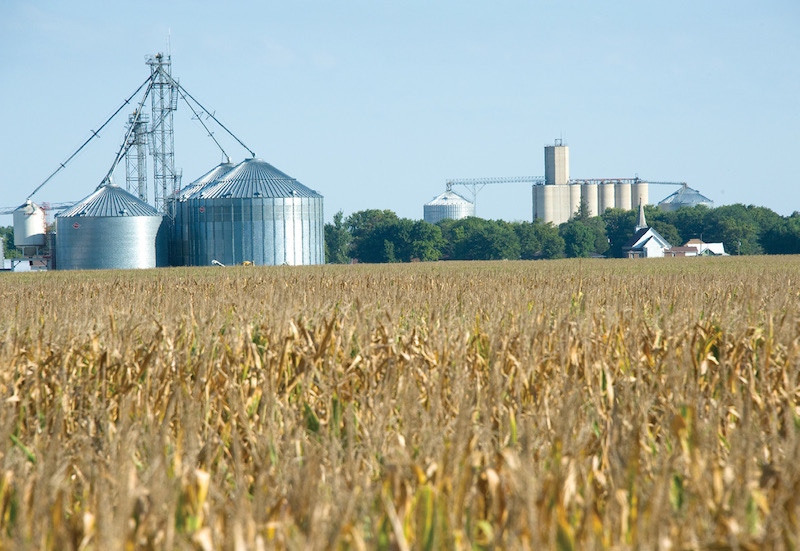August 1, 2016

The final month of the 2015-2016 corn and soybean marketing years is under way, with use during the next four weeks to determine the magnitude of year ending stocks. The 2016 growing season for those two crops is also entering the final stages, with weather over the next six weeks influencing the final yield outcome.
For soybeans, it appears that exports during the current marketing year may exceed the current USDA forecast of 1.795 billion bushels. With just under five weeks remaining in the year, exports need to average only 6.6 million bushels per week to reach the projected level.
Unshipped export sales as of July 21 stood at 236 million bushels and export inspections for the two weeks ended July 28 averaged 25.5 million bushels per week. USDA estimates of the domestic soybean crush are available through May. The June estimate will be released Aug. 1, although the NOPA estimate for June has already been released.
Cumulative marketing year crush estimates suggest that the crush during the final two months of the year needs to total about 300 million bushels in order for the marketing year total to reach the USDA crush projection of 1.89 billion bushels. The 300 million bushel requirement is about equal to the actual crush during the same two months last year. The crush in May 2016 was about 2.6 million bushels larger than in May 2015.
Year-end
The USDA will release the estimate of 2015-16 marketing year ending stocks (Sept. 1) on Sept. 30. While the magnitude of both soybean exports and crush during the 2015-16 marketing year will be well known by that time, the market does not always correctly anticipate the year-ending stocks estimate. That estimate differed from the average trade guess by 20 million bushel or more in 10 of the previous 20 years and by more than 30 million bushels in four of those years. The largest difference was 61 million bushels in 2008.
For corn, it appears that marketing year exports will be just short of the USDA projection of 1.9 billion bushels. With just under five weeks remaining in the year, exports need to average 54.2 million bushels per week to reach the projected level. Unshipped export sales as of July 21 stood at 370 million bushels, but export inspections for the two weeks ended July 28 averaged only 48.5 million bushels per week.
The Census Bureau estimate of June exports will be released on Aug. 5 and will provide further insight about the potential magnitude of marketing year exports. The USDA's estimate of corn used for ethanol and co-product production during the month of June will also be released today. Estimates through May, however, suggest that the marketing year total may fall a bit short of the current USDA projection.
Exports
Both exports and domestic non-feed use of corn during the 2015-16 marketing year will be well known when the USDA releases the Sept. 1 stocks estimate. However, the magnitude of feed and residual use during the final quarter of the year will not be known, but instead will be revealed by the stocks estimate. As a result, the Sept. 1 stocks estimate has occasionally provided a surprise. That estimate has differed from the average trade guess by more than 100 million bushels in six of the past twenty years. The largest difference was 301 million bushels in 2010.
The USDA's first survey based forecasts of the size of the 2016 U.S. corn and soybean crops will be released on Aug. 12. Based on generally favorable weather so far this summer and exceptionally high crop condition ratings, that survey is expected to reveal prospects for very high U.S. average yields for both crops and record or near record large crops.
Newswires will be releasing production estimates from various private analysts in the next few days. Those private analysts have not always correctly anticipated the USDA production forecast in August. The difference between the average trade guess for corn and the USDA forecast exceeded 250 million bushel in nine of the previous 20 years. The largest difference was 354 million bushels in 2015.
Soybeans
For soybeans, the difference between the average trade guess and the USDA August forecast exceeded 50 million bushels in 11 of the previous 20 years and exceeded 100 million bushels in five of those years. The largest difference was 174 million bushels in 2015.
The USDA will release new corn and soybean production forecasts in September, October, and November with the final production estimates to be released in January 2017. The final estimates of the U.S. average yield and production always deviate from the August forecast. For corn (soybeans) the final yield estimate exceeded the August forecast in 11 (12) of the previous 20 years.
Corn
For corn, the absolute difference between the final estimate and the August forecast exceeded three bushels in 12 of the 20 years and exceeded five bushels in six years. For soybeans the difference exceeded 1.5 bushels in 9 of the 20 years and exceeded three bushels in five years. Estimates of planted acreage of corn and soybeans may also change, particularly in October, due to the availability of FSA planted acreage data.
USDA production and stocks estimates occasionally provide surprises to the corn and soybean markets. Upcoming consumption estimates and production forecasts, however, would have to provide historically large surprises in one direction to alter expectations of a build-up of stocks of U.S. corn and soybeans during the year ahead.
You May Also Like




